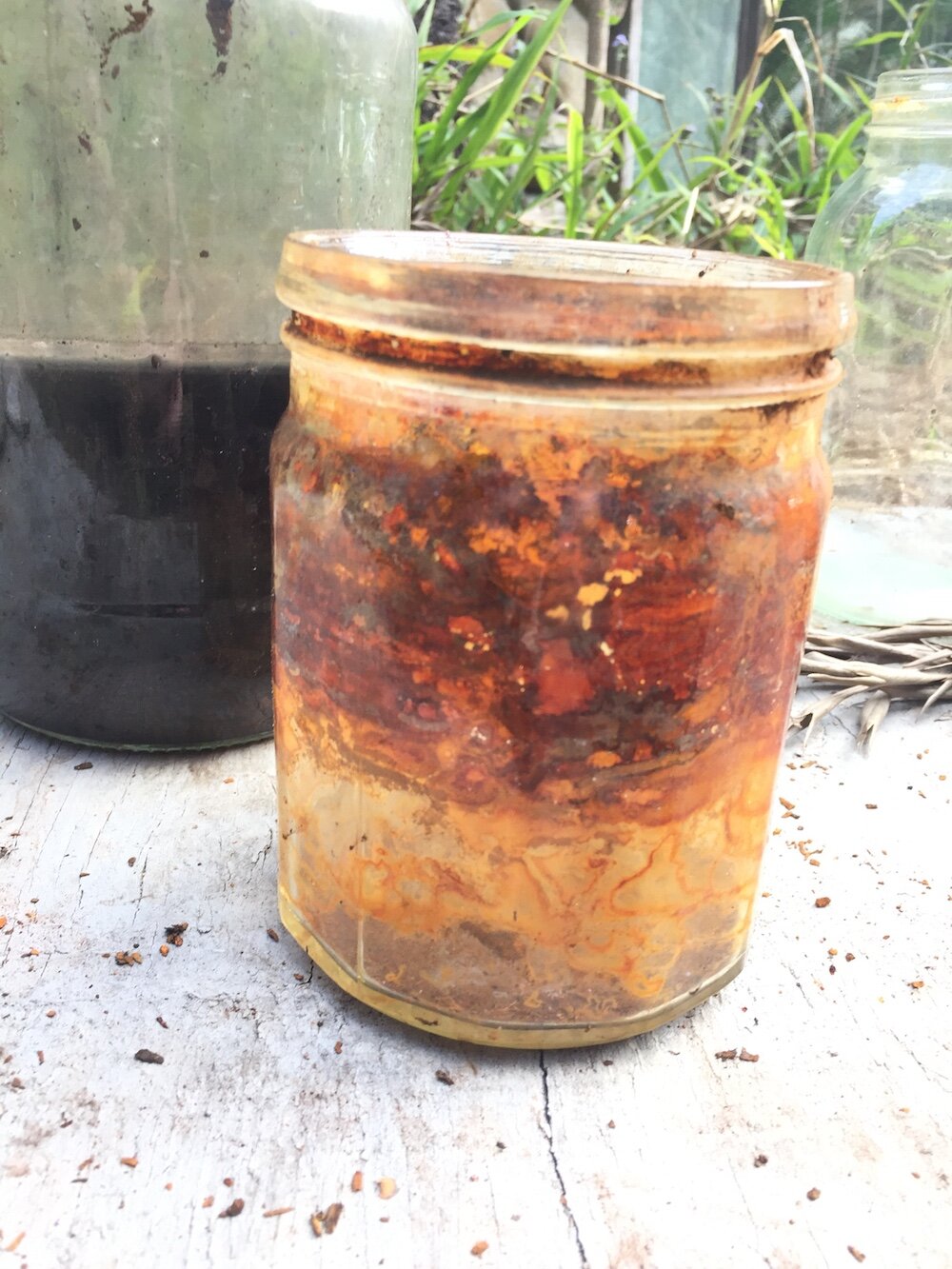eucalyptus and rusty iron dyeing :: natural & botanical dye how to
Dyeing with rusty things is such a satisfying part of natural and botanical dye, and a great way to extend the possibilities in your dye pot. I use it in a few different ways, and I wanted to share some of my outcomes with you, as well as share how to make rust water or how to do iron after dye.
Recently many of my dye pots were giving me brown and more brown, which you know is sort of pretty, but can get a little tedious. Especially when I'm trying to get beautiful, fun, exciting colours to send out for fabric kits I create.
When I dyed with eucalyptus, or gum leaves and seedpods, gathered from around here a little while ago I got these lovely purples, with orange hints. But this time, just some brown with the very faintest orange-brown prints through it. So, I did what any good botanical dyer does - I made some iron water and over-dyed the fabrics.
I put the fabric and the rusty water, and all the old rusty nails and bits and pieces into a glass jar, filled it up to the top with tap water (we use rain or creek water) and left it in the sun for a few days. I only need a couple of days of solar dyeing here, and it warmed up quite a lot, more than I thought it would on these short Winter days.
Here's the beautiful results that I pulled from the dye pot. I wish I'd photographed the before-browns, but of course life doesn't always allow for the camera to capture everything.
Making iron water is pretty easy, and a great way to colour change your dyed pieces.
You can make your own using white vinegar and whatever rusty things you can find, or you can buy iron as ferrous sulphate from a garden centre (or from a dye place, there's a few different ones online depending on where you live).
Note: Take care with using iron on wool because it can weaken the fibres, so don't leave it too long (ie not more than a day really). Homemade iron water, using rusty metals, will be gentler than ferrous sulphate, so if possible I'd suggest gathering and making your own.
Of course you can also dye directly with the rusty things, in a bundle dye, and get marks and patterns upon your cloth or paper, without needing to make an iron water mordant / colour modifier.
Gathering rusty nails, bits of wire, unusual shapes and layering them into your fabrics when you fold or roll or bundle, then dye using any method you prefer (check out my course for different methods possible). I've used tins from our recycling box as a colour shifter, and while I know there's no iron in the tin, the metals created beautiful patterns and colours on this cloth, when heated in a dye pot.
This is just another way to create different colours from one dye pot. Iron often 'saddens' or darkers the colours, but also shifts the ph somewhat. Pinks, reds and oranges can turn to purple before they change to greys. Sometimes blacks are possible, but do take care of how long you leave your fabric in the iron to achieve this black as it will weaken all fibres.
How to make your own iron water for natural dyeing:
Put as many rusty things into a glass jar as you can find. Add more over the days and weeks when come across them. Once you start looking I'm sure you'll find them in the streets and the gutters, or hiding in the garden, or the shed, or if all else fails perhaps the demolition yard or op-shop / thrift-store or a tip-shop. Think rusty nails, old screws, springs from a trampoline, hinges, bits of wire, old cans or tins.
Fill the jar with 1 part white vinegar to 2 parts water (or thereabouts; you don't have to be too accurate), and put the lid on (or cover it up somehow).
Leave for at least a week or two then add as an after-mordant / colour shifter.
The circles that you see here are made from rusty lids of jam jars. I used two - one on either side of a little stack of fabric - like a Shibori-resist, and clamped them tight with clamps (or some sticks holding it down and string keeping it in place). This creates beautiful speckled moons on your fabric.
I have more how-tos of different Shibori and natural dye possibilities in my online Botanical Dye course.
It’s so wonderful how we all create different possibilities depending on our region.


















